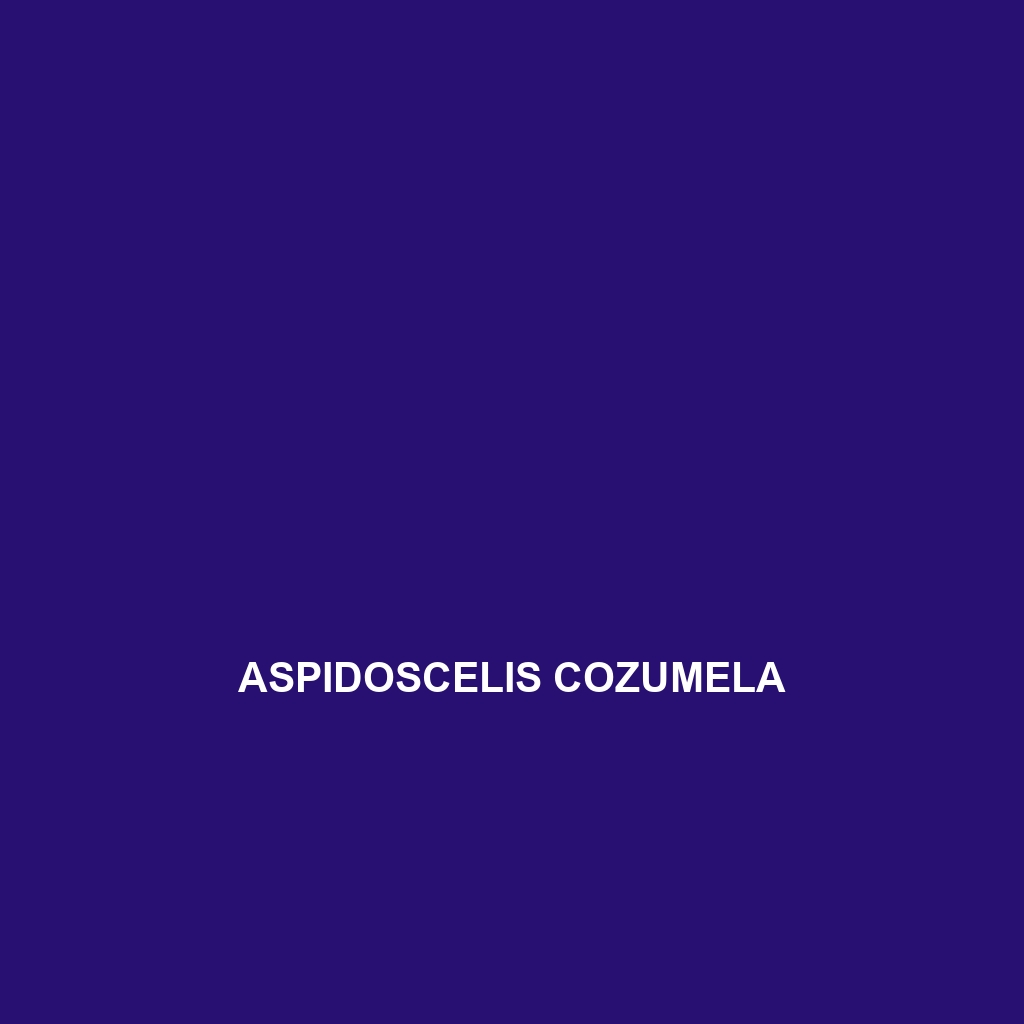Common Name: Aspidoscelis cozumela
Scientific Name: Aspidoscelis cozumela
Habitat:
Aspidoscelis cozumela, commonly known as the Cozumel Whiptail Lizard, is primarily found on Cozumel Island in the Caribbean Sea, off the eastern coast of Mexico. These lizards thrive in dry, tropical environments, including coastal scrub, sandy areas, and semi-arid regions. Their habitat preference often includes areas with sparse vegetation, making them adept at navigating their surroundings.
Physical Characteristics:
Aspidoscelis cozumela is a medium-sized lizard, reaching lengths of about 16 to 20 centimeters. They exhibit a slender body with smooth scales that are typically brown or gray in color, adorned with distinctive darker stripes or spots along the dorsal side. One of their notable features is their long tails, which can often be longer than their body, providing balance and agility. Their limbs are relatively short, adapting them well for quick movements among the bushy undergrowth.
Behavior:
This species is primarily diurnal, meaning that it is active during the day. Aspidoscelis cozumela is known for its quick bursts of speed when escaping predators or capturing prey. Socially, they tend to be solitary, though they can sometimes be spotted basking together in the sun. Their communication involves a mix of visual displays and body language to assert dominance or show readiness to mate.
Diet:
Aspidoscelis cozumela is an insectivorous lizard, feeding primarily on small insects such as ants, grasshoppers, and beetles. They also consume other invertebrates that are readily found in their habitat. Their agile hunting skills and keen eyesight are crucial for effectively catching prey.
Reproduction:
The reproductive habits of Aspidoscelis cozumela include seasonal breeding, typically occurring during the warmer months. Females lay clutches of eggs, usually numbering around 2 to 5. After an incubation period of approximately 6 to 8 weeks, hatchlings emerge, fully independent and miniature replicas of their parents.
Conservation Status:
Currently, Aspidoscelis cozumela is listed as vulnerable due to habitat loss and degradation caused by urban development and tourism on Cozumel Island. Conservation efforts are crucial to protect their natural habitat and ensure the species’ survival.
Interesting Facts:
Aspidoscelis cozumela is unique among many lizard species for its ability to reproduce through parthenogenesis, whereby females can produce offspring without male fertilization. This fascinating reproductive strategy allows populations to sustain themselves in isolated environments.
Role in Ecosystem:
Aspidoscelis cozumela plays a vital role in the ecosystem of Cozumel Island as both a predator and prey. By controlling insect populations, they contribute to the ecological balance and serve as a food source for larger predators, such as birds and snakes. Their presence indicates a healthy ecosystem, making their conservation essential.
